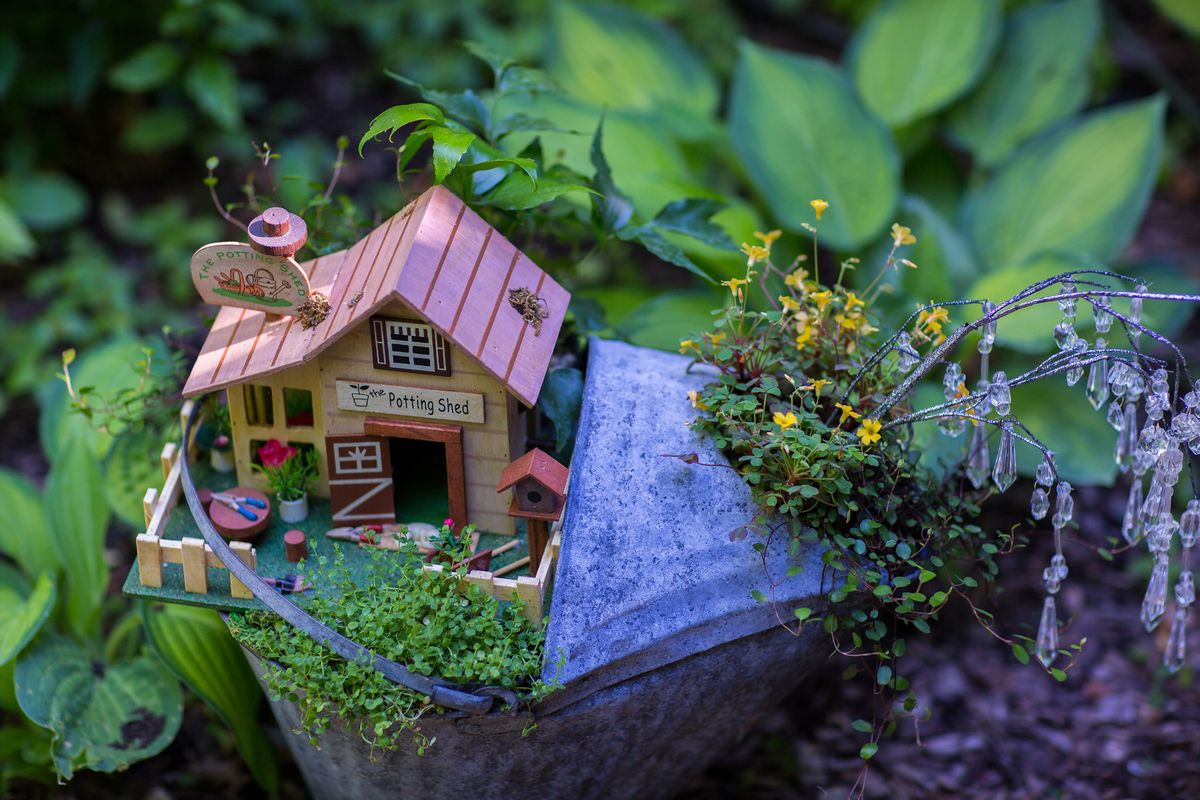Petite plantings
Miniature gardens employ creativity with little effort

Some people are downsizing their gardens big time. They’re moving from whopping perennial borders to terrariums, tiny Zen gardens and fairy-gardens-in-a-pot. In these little landscapes, a watering can is typically the size of a quarter and a layer of moss serves as ground cover. They require little maintenance and can be enjoyed on a deck, patio or balcony.
The world of itsy-bitsy settings attracted Katie Elzer-Peters as a child. “My grandma and I used to make shadowboxes and mouse houses, and I had an American Girl doll that I loved,” she said. “I couldn’t buy a whole lot of stuff for my dolls, so I made my own things – dishes, furniture, clothes, quilts – you name it.”
Elzer-Peters is the author of “Miniature Gardens: Design and Create Miniature Fairy Gardens, Dish Gardens, Terrariums and More – Indoors and Out” (Cool Springs Press), and she has fashioned dozens of pint-size gardens.
“Size is the main thing to keep in mind when selecting plants and accessories for fairy gardens,” she said. “You’re creating tiny worlds. Make sure everything looks like it belongs.”
“The fairy garden craze has really taken off,” said Nancy Kuhajda, extension program coordinator at the University of Illinois Extension in Joliet, Illinois. “There are people who aren’t that into gardening as a whole, but find the curiosity and whimsy of fairy gardens something they want to try.”
Nancy Eleder has created several imaginative vignettes in her garden. Some fairies relax in a cozy woodland setting, while others attend a picnic. Some are working with cows and chickens on a teeny farm, training their tiny dogs at an obedience school, and tending their flowers at the fairy garden shed.
“It’s a lot of fun to pick a theme and then build a small garden around the theme,” Eleder said. “Experiences from the past can be re-created in a small garden to add some nice whimsy. It’s fun to create a miniature fantasy land in the garden.”
“Our fairy gardens are reminiscent of two of our favorite places: the giant redwood forests of the California Sierra Nevada mountain range and Pemaquid Point Lighthouse Park in Maine,” said Chris Blecker. An old wooden cart houses a fairy garden modeled after the Calaveras Big Trees State Park in Arnold, California. “While we couldn’t exactly plant a giant redwood, we tried to replicate it as best we could on a fairy garden scale. There’s a river of flowers with giant (pottery) koi fish ‘swimming’ under the cart.”
One of Eleder’s favorite miniature plants is Blue Mouse Ears hosta, which grows only 8 inches tall.
“Since I have a lot of shade in the yard, I try to find miniature plants that will do well with limited light,” Eleder said. “This hosta has a soft blue-green color, slightly curled leaves, and a nice texture on the leaves. It is very durable and comes back every year. The name is pretty cute too.”
For Eleder, a retired reading teacher, designing fairy gardens allows her to delve into her artistic side. “There are just so many different things you can do without a lot of shovel effort,” she said. “There are no rules. … Just have fun and let your imagination run wild.”